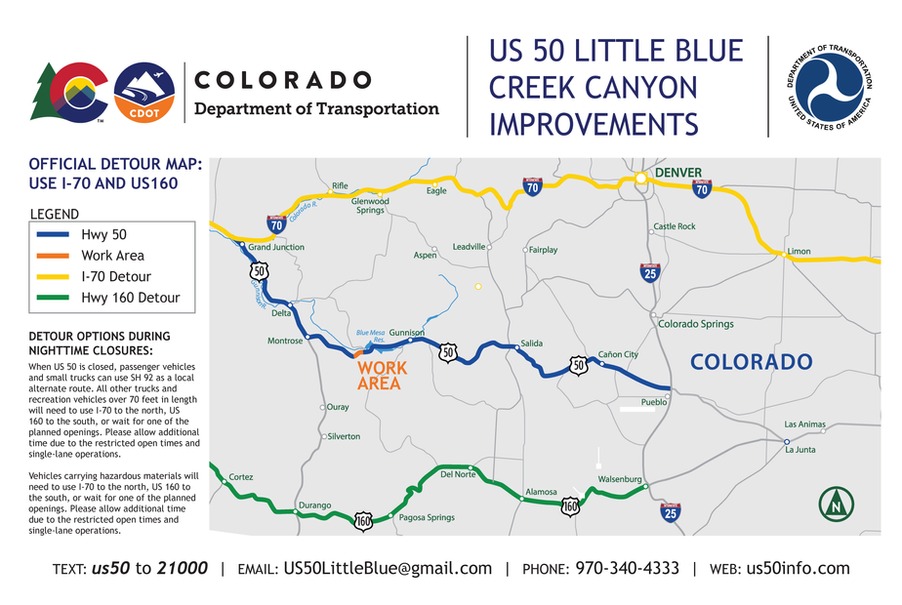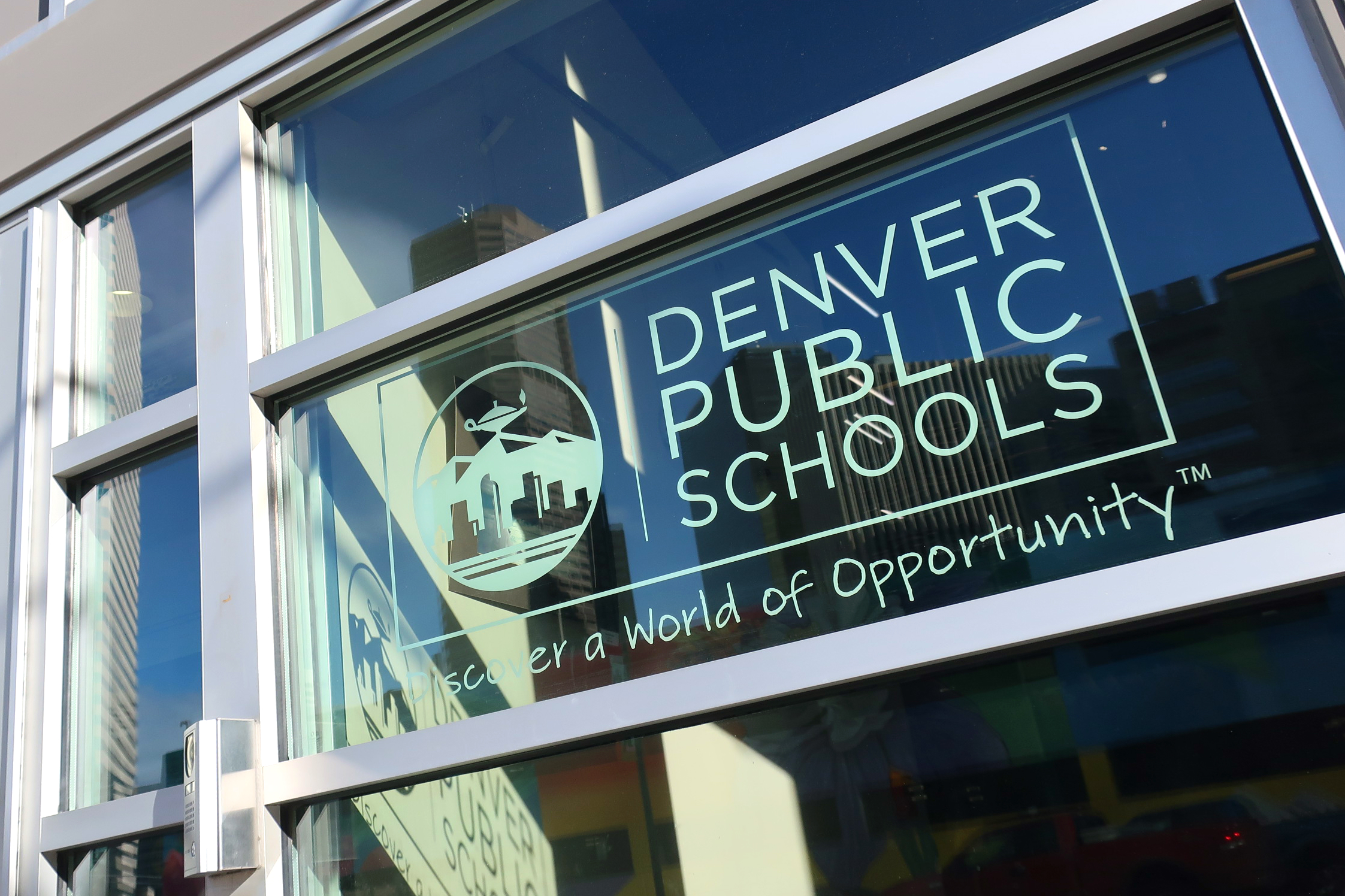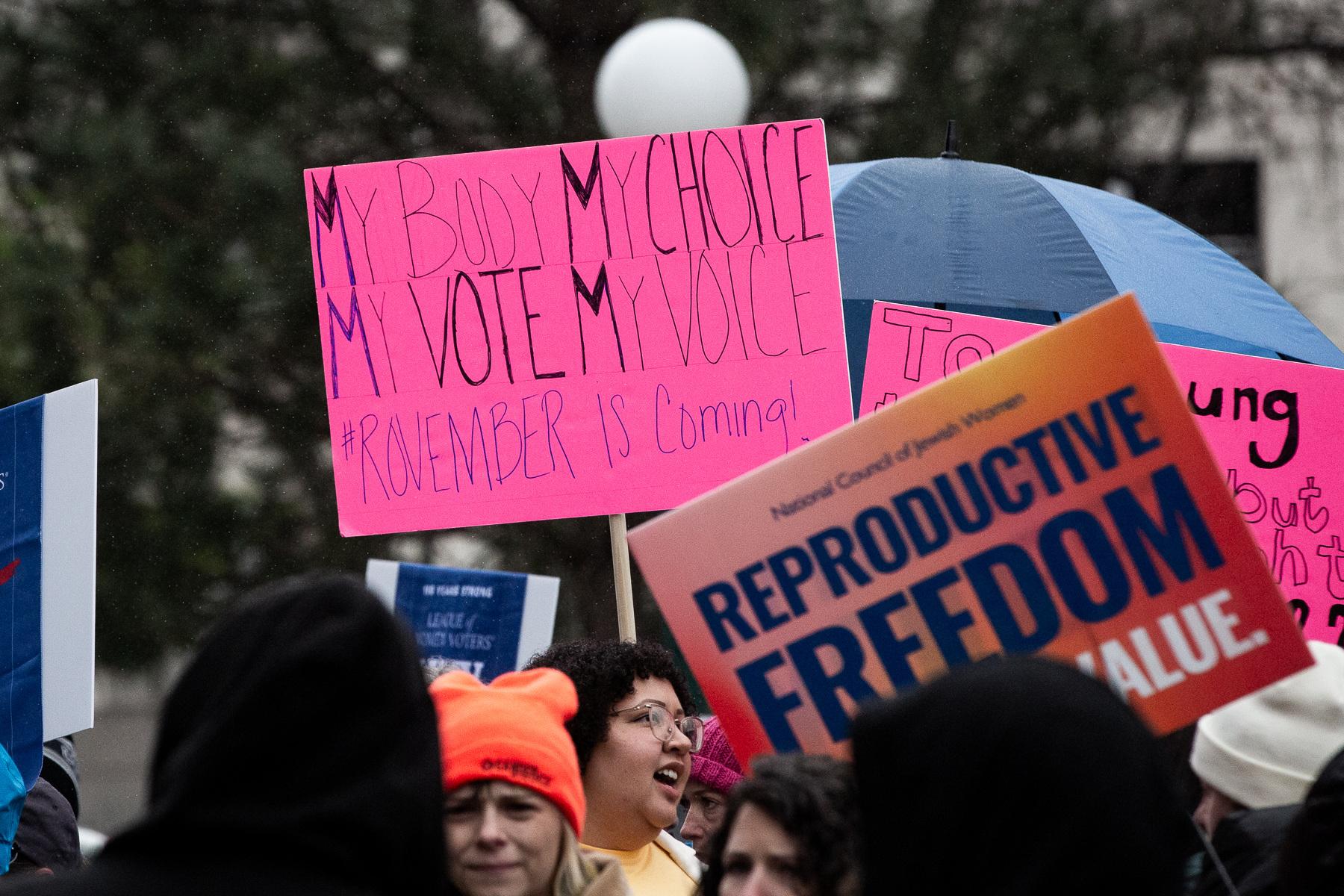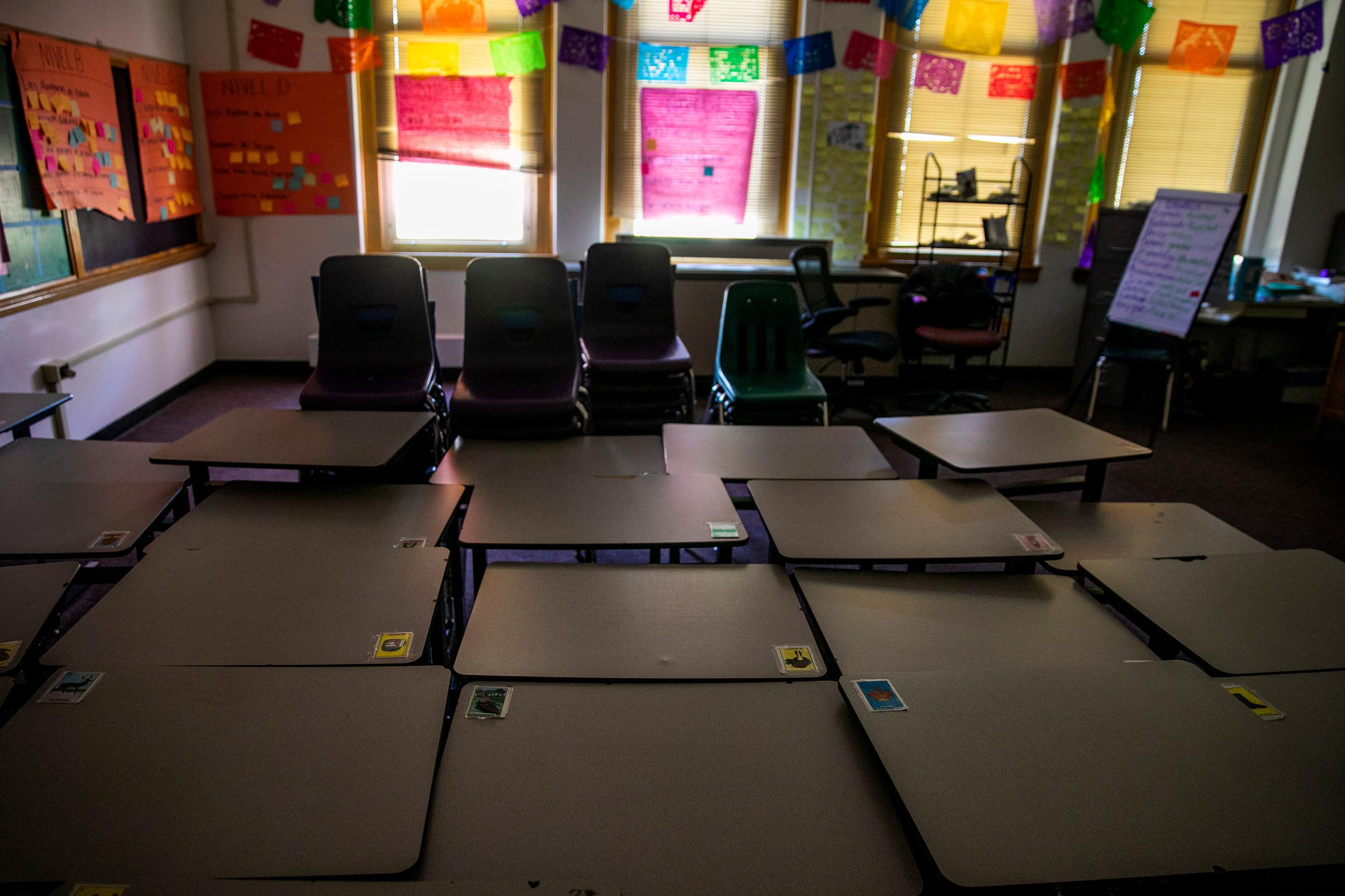
A financial storm is headed straight for Colorado’s schools. State income and sales tax have fallen through the floor and the state faces as much as a $3 billion dollar hit. So school districts across the state are preparing for years of budget cuts, with the hardest hits expected two to three years down the road, according to state forecasts.
“This is going to be a huge shift in what districts are going to have to plan for,” said Karen Hawley Miles, chief executive officer and president of Education Resource Strategies, which works with leaders in schools, districts and states around managing school resources.
“We’re going to have to really think creatively about what we no longer need to be doing anymore, while we’re adding many new things that we need to be doing,” she said.
But many of Colorado’s districts already have bare-bones budgets that never recovered from the Great Recession. Since the 2008 schoolyear, the state has withheld $8 billion dollars in total from schools in order to balance the state budget. The current annual shortfall is still half a billion dollars across the state.
Districts say everything is on the table: Furlough days, freezing pay, four-day school weeks, bigger class sizes, merging schools, cutting sports and arts.
Why are schools cutting budgets?
Since the COVID-19 outbreak, people are buying less stuff and state tax collections have plummeted, which means less money for schools. The legislature sets funding for schools, and it convenes May 18 to formulate a budget. All schools are closed through the end of the school year.
The Colorado Department of Education told Colorado’s 178 schools districts to plan for cuts between 1 and 10 percent. But many are preparing for cuts much bigger than that. School finance expert Michael Griffith of the Learning Policy Institute says he’s hearing of districts across the country preparing to cut budgets by five to thirty percent, with most in the 15 to 20 percent range. In comparison, he says districts averaged 7.5 percent budget cuts during the Great Recession.
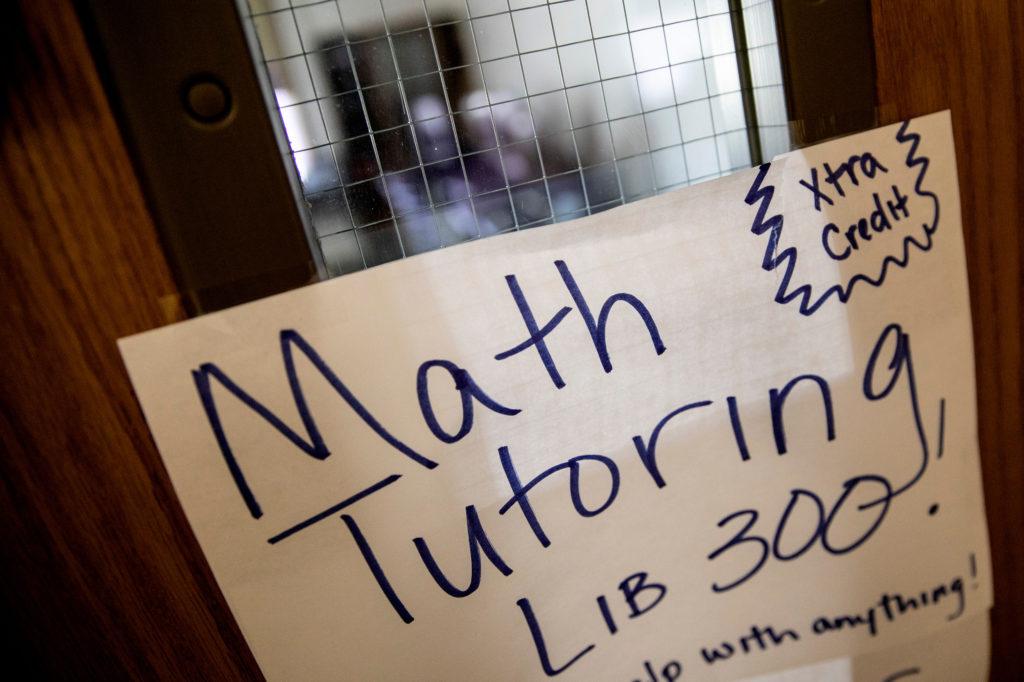
“So when we're talking something in the realm of 15 to 20 percent, we're talking something that's two, two and a half times worse than our worst year in the last recession.”
Griffith ran an analysis on how many teaching positions each state could lose.
“If there were a 15 percent cut in funding, we would estimate that Colorado would lose about 8 percent of their teachers,” which would equate to 5,710 potential lost teaching positions.
The real depth of cuts to K-12 education in Colorado depends on several factors: how state lawmakers spread the cuts in late May among competing priorities including Medicaid and higher education, how many students enroll in August, and how much federal stimulus each district gets. The state gets another revenue forecast on May 12, which will help state and district officials nail down cuts. Districts will have to finalize their budgets for the next year by the end of June.
The budget impacts will likely last beyond the coming school year. That’s because of Colorado’s Taxpayer Bill of Rights’ “one-way ratchet” effect. Tax collections fall when the economy declines, but state law limiting increases in revenue means state coffers can take years or even decades to refill. Jefferson County School District Superintendent Jason Glass said his district has lost hundreds of millions of dollars since the state began withholding money from districts.
“We still have not recovered completely from that cut,” he said. “So this is going to compound those cuts that we felt during the Great Recession.”
Huge cuts must be carried out quickly and many unknowns remain
Schools districts are working blind right now. They don’t know how the COVID-19 crisis will impact enrollment, which determines how much money flows from the state. Some people will choose to homeschool their children, move seeking lower rent, and some new students from private schools may enroll. More students will likely arrive at schools with higher needs, according to superintendents.
It’s also unclear how much money districts will get from the federal CARES Act, which provides up to $16.2 billion to states’ preschool through 12th grade systems. Ninety percent of the main CARES program must go directly to school districts and 10 percent can be retained by the state to distribute out to the highest-need school districts.
But CARES Act money is equivalent to only 1.9 percent of funding for preschools and K-12 nationwide, according to an analysis by Griffith, the school finance expert with the Learning Policy Institute.
A second pot of education money goes straight to governors, who will decide how much goes to higher education and how much goes to K-12.
School board members would typically spend months analyzing the ramifications of each proposed cut, given how big some of the changes could be. During the recession, when big cuts came in 2009, schools found out what amount they had to cut almost an entire school year ahead of time. Now, they’ll have a month, which limits public input.

“We didn't build any of our budgets with fluff, let's just be honest,” said Douglas County school board chair David Ray. “We’re facing this in the midst of a state that for several years now has not fully funded public education. And so it makes perfect sense that we're really having a hard time with this task.”
In addition, many districts don’t have the manpower to fully research what each option would mean for classrooms.
Here’s how a few of the state’s largest districts are approaching cuts:
Denver
Denver Public Schools, the state’s largest school district, has identified a number of options to confront the grim budget situation, which the school board discussed in an April 16 meeting. Scenarios range from a best case of flat funding which doesn’t allow for inflation, meaning a $19 million dollars loss to the district to a 5 percent revenue decrease, a $61 million cut.
“We are in a very, very dire financial situation,” Chuck Carpenter, the district’s executive director of finance told the board. “Even the best case scenario, we're in a dire situation.”
The options the district is considering include pay freezes, across-the-board salary cuts, furloughs, dipping into reserves, consolidating smaller schools, and adjusting bell time to save money, among others.
“It's a little overwhelming and very depressing ,” said board chair Dr. Carrie Olson. “I'm trying not to hyperventilate as I see some of these numbers.”
Mark Ferrandino, DPS deputy superintendent for operations, sat on the state’s Joint Budget Committee the year the Great Recession slammed Colorado. The budget shortfall then was similar to today’s shortfall when adjusted for inflation and scale of the budget.
“If the [state] general fund is dropping between 15 to 25 percent but we’re looking at somewhere between zero to five percent reduction, the state is doing a lot of things to shore up and not see cuts to K-12,” he reminded board members. “There is a lot of pressure on the budget during a downturn and especially during a crisis like this.”
Tracie Rainey with the Colorado School Finance Project believes some of the big districts are underestimating the size of the impending cuts.
“This idea that there will be a 5 or 8 percent cut, it’s not realistic. I hope I’m wrong. But from the discussions at the Joint Budget Committee, it appears that the cuts to education will have to follow a similar pattern as cuts to other departments and that will be between 10 and 20 percent.”
Freezing the educator raises would save $11 million and require reopening contract negotiations with the teacher’s union. Denver teachers went on strike for three days last year to demand higher pay, among other things.
Eliminating a planned cost-of-living increase for all employees would save $12 million. An across-the-board one-percent pay decrease would save $6 million, and each furlough day per year board members may decide to implement would save $4 million per day.
As recently as January, DPS was counting on a 2 percent increase in state per-pupil revenue that would have increased wages for lowest-earning employees starting in July. That’s on shaky ground now. Delaying the raise until next year would save $1.5 million.
One of the more controversial options is consolidating smaller schools, which would save the district $500,000 per school. The idea of signing off on that without community input rankled some board members.
“I'm thinking of just getting a taboo buzzer and anytime I hear the word consolidation,” said board member Reverend Bradley Laurvick. “I will not consolidate at the cost of our community’s agency.” This option couldn’t be implemented until 2021.
Denver is eyeing its 10 percent reserve, much larger than other districts. One possibility would be to reduce it to the more standard 7 percent. But the drawback is the money is one-time and the funds would need to be replenished. The district’s budget masters also are cautious about the negative impact on credit ratings that any depletion in reserves might cause.
Amidst drastic cuts, school officials predict student needs will be even greater when school resumes, following months of lost learning. Denver joined a coalition of urban districts to ask the federal government for another stimulus bill.
“There's no way we're going to be able to do the kind of acceleration that we need [given] the kind of budget landscape that we're all grappling with here today,” said Superintendent Susana Cordova. “We're going to need additional resources to support the most vulnerable kids.”
Currently there is a hiring freeze on all non school-based employees and a purchasing freeze for any non-essential goods.
Jefferson County
Under the most drastic scenarios considered, Jefferson County would contemplate structural changes like a 4-day workweek and cutting almost everything that isn’t mandated would be in order, Glass said. That’s if the district has to cut 10 to 20 percent.
“When you have to fill a hole that potentially is tens of millions of dollars in size, we've got to get past things like low wattage light bulbs or, or fewer copies, you have to generate solutions that are at the scale of the problem.”
A one to ten percent budget cut for Jeffco equates to between $7 million and $70 million. The district is currently modeling for a reduction at 5 percent, or around $34 million. Independently run charter schools would also have to cut a proportional amount from their district funds.
In an April 23 Facebook live session with the public, Glass offered several sample scenarios to show what cuts could look like:
$34 million cut (5 percent): Charter schools will need to cut $4 million for their share. So that leaves the rest of the district with a $30 million problem. Glass said the district could take $15 million from the cash reserve, get $7 million through two furlough days before the December holiday break, $6 million from a one percent staff pay reduction, plus $2 million dollars cut from district programs.
$60 million cut (10 percent): Start with taking $20 million from the district reserves. The pending federal stimulus could replenish part of the reserve. The rest could come from three furlough days, closing ten schools, district reductions and layoffs, pay reduction and school layoffs.
For now, principals have been asked to only hire back essential staff.
“Everything is being scrutinized,” Glass said.
Though the budget situation may necessitate it, Glass said he does not want to lay off personnel, noting that the district is the largest employer in the county.
“So when we start laying people off, it has a ripple effect through the whole community and our local economy,” he said. “I don't want to get to a place where we're laying off employees into this economy where they probably won't be able to find other work.”
Cuts or freezes to salaries will be hard to swallow for many teachers, whose salaries were stagnant or frozen for years after the Great Recession. Colorado teachers salaries have dropped 19 percent when adjusted for inflation between 1992 and 2018, according to the Colorado School Finance Project.
When Glass spoke of pay freezes and pay cuts during the Facebook live event, a flood of chat comments from teachers scrolled up the screen.
“You keep mentioning furlough days so it seems like it is clear that teachers are going to have to carry a significant burden again and are left with empty platitudes and promises that will remain unkept,” wrote one.
“Freezing salaries in a virtually non-competitive district based on salaries in the state, and bottom 10 in the nation. Brilliant,” wrote another.
“The budget shortfall cannot and should not fall on the backs of teachers like the last recession,” wrote a third.
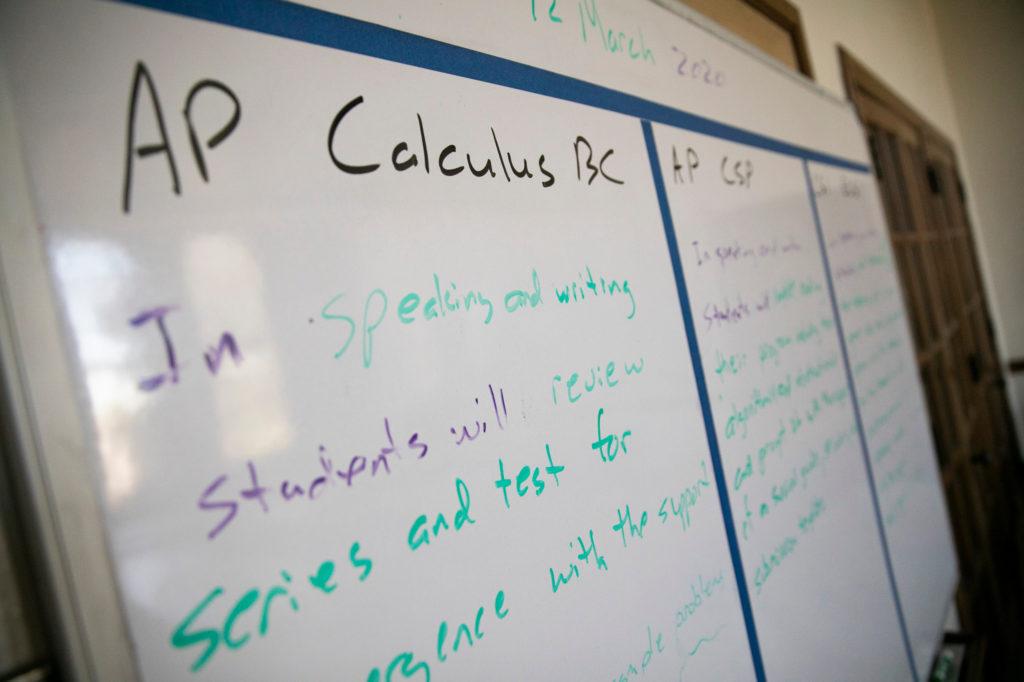
Douglas County
The coronavirus pandemic eviscerated a planned increase of $222 in per-pupil spending that Douglas County was counting on for next year. That’s a loss of $11 million for district-run schools. Board members were supposed to review a list of 30 possible ways to raise revenue in order to give teachers long-anticipated pay raises. That’s off the table for now. Board members have spent the past several weeks scrutinizing the list instead as a way to fill a gaping budget hole.
The Douglas County board is studying scenarios ranging from a $12 million decrease in state funding to a $30 million cut.
Options for balancing the budget include reducing staff in schools where enrollment has dropped and having bigger class sizes, raising fees that families pay, selling buildings, eliminating middle school sports and all transportation to school sports, among many others.
In an April 21 board meeting, chair David Ray pushed board members to narrow the list of 30 items so staff could research the ramifications of each cut. But others pushed back. Until they know the magnitude of the state cuts, they said, everything on the list has to be considered.
Central office cuts are always a big target but Superintendent Thomas Tucker reminded the board that the district has one of the leanest central offices along the Front Range. It would just mean fewer or delayed services to students.
The board was split on whether to consider four-day school weeks and increased fees for families.
“I think there are some minor changes that we can make that do pass some of the costs off that are not going to create significant budget problems for our families,” said board member Elizabeth Hanson. Others disagreed, stating that the community recently approved a bond and property tax increase and now isn’t the time to bump up fees.
Board member Kevin Leung noted that of the options, a four-day week could save the most money compared to the other options. Others, like board member Susan Meek, said that option needs more time and community input to implement.
“That would be a dramatic change for our community,” she said. One option board members want more research on is whether money could be saved with four days in school and one day remote learning at home.
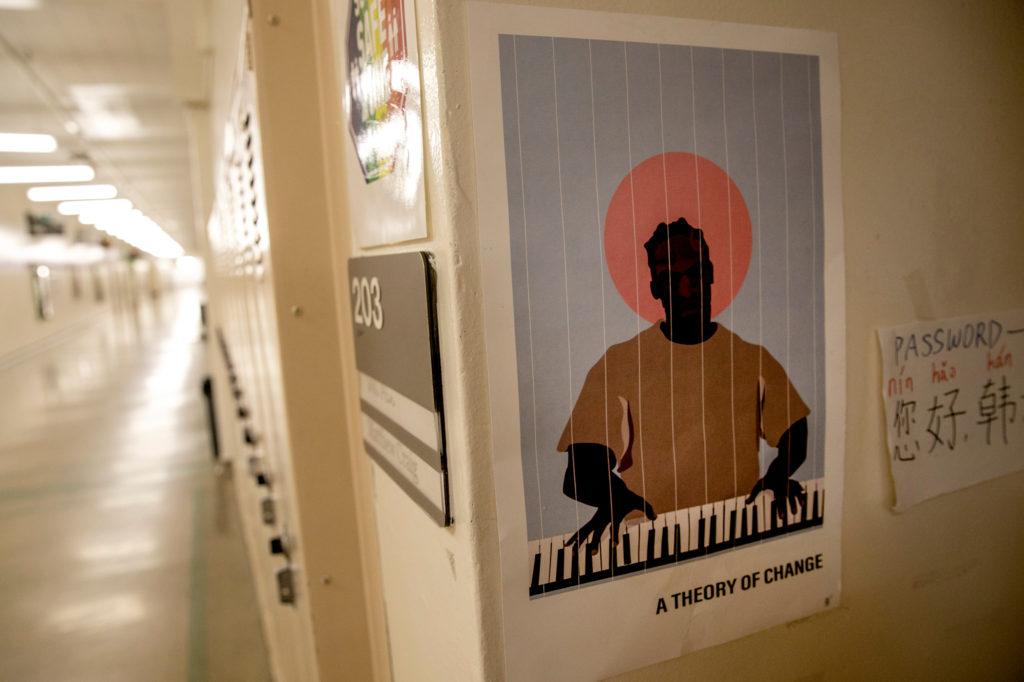
Board member Krista Holtzmann says some of the proposed cuts are things that help students' mental health -- and attendance.
“Not having transportation to high school sports at all, not having middle school sports, not supporting our special programs -- all of those things would really negatively impact the educational experience we provide our students,” she said.
In a school district virtual town hall April 23, a caller asked district officials not to cut music, band or sports. Tucker said he couldn’t promise they would be spared, but he would fight to maintain them. “Band, music and physical education and sport are all academics as far as I am concerned,” he said.

